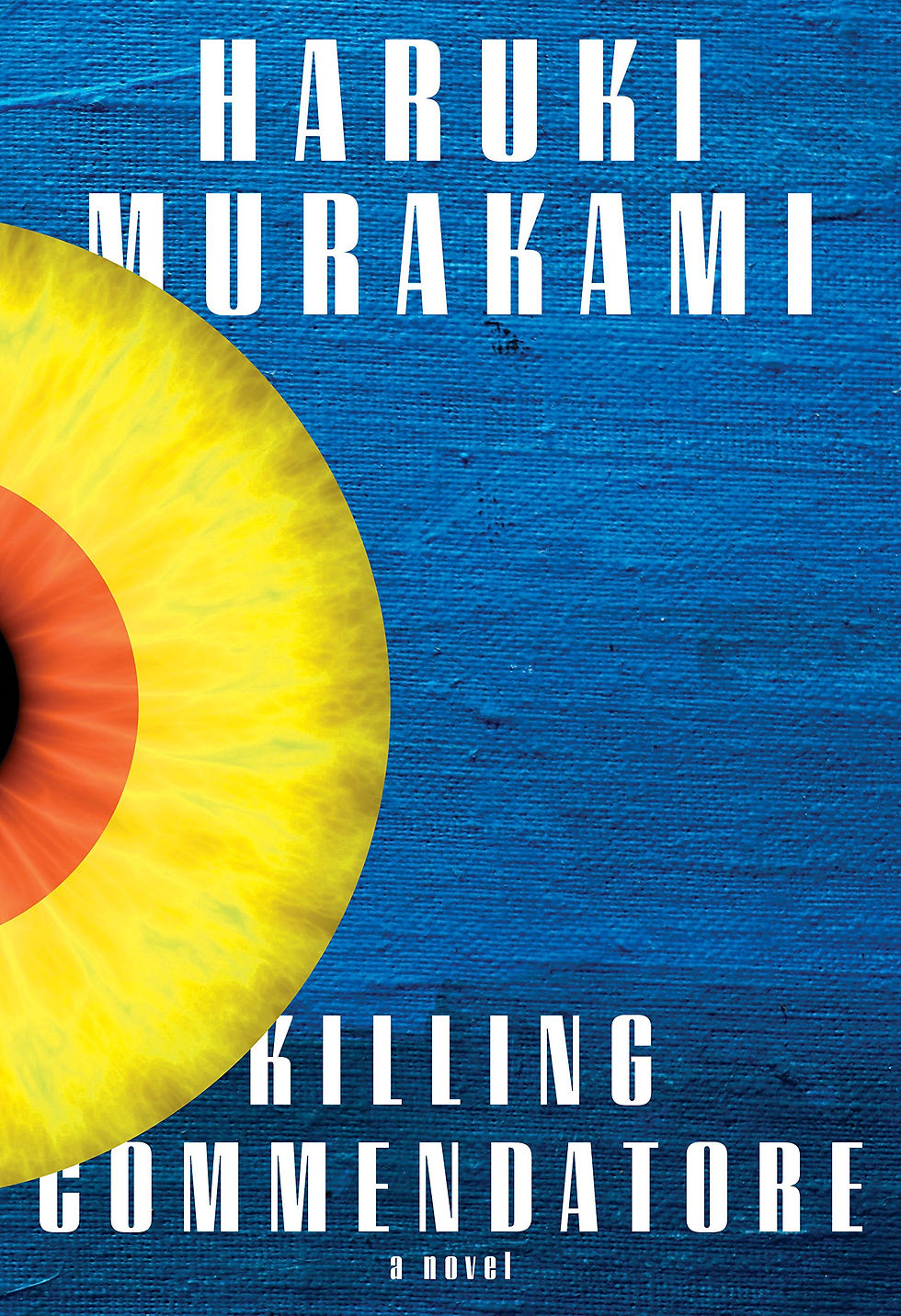
"Killing Commendatore" by Haruki Murakami. An exemplary novel by the author that will appeal to his fans and disappoint everyone else.
In the novel, a lone artist finds himself in a mysterious house on a mountain, and finds there a painting by a homeowner in which Don Juan kills the Commander. Over time, the mysterious story about the author of the canvas turns into a family drama, thriller and even fantasy.
“Everything has a bright side,” he said. “The top of even the blackest, thickest cloud shines like silver." ― Haruki Murakami ~~ Killing Commendatore
One of the eternal mysteries of the domestic book market is the positioning of Haruki Murakami on it. While in his native Japan and in the rest of the world he is considered a strong intellectual mainstream for a reader with above average requests, for some reason he fell into a frankly trash niche in our country and for almost two decades has remained a legal object for reader arrogance and snobbery. As practice shows, persuasion and preaching do not work in this case, so if you believe that Murakami's place is somewhere between Coelho and Darya Dontsova, then you can safely skip The Assassination of the Commander: nothing radically different from the writer's previous novels (and therefore, there is no one capable of shaking your faith). If you belong to an equally numerous army of his admirers, you will probably be pleased to know that "The Assassination of the Commander" is an exemplary recognizable thing, literally emblematic, ideally meeting all expectations, and in some places (probably due to the cyclopean volume - more than 800 pages) generously surpassing them.
Abandoned by his beloved wife, the hero-storyteller, an unnamed portrait painter, moves to a secluded house on the mountain. This house belongs to his friend and classmate, and before it lived the father of the current owner - a famous artist who worked in the traditional Japanese style "nihonga". After a leisurely and thorough swing, which takes more than two hundred pages, two important events take place in the hero's life almost simultaneously: first, in the attic he finds a carefully packed picture of the former owner, in which he captured the scene of the murder of Commander Don Juan. And secondly, a close and, it seems, not quite disinterested interest in the hero begins to show a neighbor who lives on a nearby hill - an eccentric rich man with snow-white hair.
From this point on, the pace of the story accelerates dramatically. On mystical riddles (having disassembled an ancient stone pyramid near his house and opening a crypt located under it, the hero lets in something incomprehensible, dark and dangerous into the world) riddles from the distant past are layered. So, before moving on to traditional Japanese painting, the former owner of the house worked in a European style and trained in Vienna right before the war. However, later he changed not only his artistic style, but also his lifestyle. From a daring bon vivant, he turned into a sullen hermit overnight, and the key to this metamorphosis seems to be hidden in a strange painting found in the attic. Little by little, the motive of a sentimental family drama is woven into the general melody (the gray-haired neighbor suspects that the girl living nearby is actually his daughter), then the thriller theme sounds (the girl disappears under strange circumstances), and at the very end the hero will have to fall into another world and endure a test in the best traditions of either Neil Gaiman or Lewis Carroll.
If "Assassination of the Commander" is not the first novel by Haruka Murakami in your life, then you undoubtedly know that it is imprudent to expect from a writer to successfully resolve all plot conflicts. Some knots will untie, some (in fact, most of them) will not, the most promising lines will simply dissolve in a fog of understatement, and the hero's final mystical journey will not be a powerful final staccato, but a dummy - in fact, a decorative trick. In a word, the amorphous "Assassination of the Commander", written as if without any structure and preliminary plan, is most of all like a Rorschach stain, suggesting, let's say delicately, an active reader's co-creation.
However - and this circumstance can be explained by the exceptionally special (and, as we know, far from universal) charm of Haruki Murakami - despite all of the above, the novel does not seem to be drawn out, or loose, or disappointing. Unforgivable flaws like endless exposure and a failed ending in Murakami's case do not at all give the impression of annoying shortcomings. Unlike other interesting, but imperfect books, where flaws are balanced by virtues, in "Assassination of the Commander" between the first and the second there is virtually no border. Lengths, voids, plot loops and self-repetitions (an attentive reader will surely find numerous references to The Chronicle of a Clockwork Bird, and to the Colorless Tskuru Tazaki, and to the famous Sheep Hunt in The Assassination of the Commander) - this is exactly what for which fans of Murakami love their idol, not just forgiving him deviations from any genre canons, but simply not noticing them. And this once again makes us think about the exclusive role of a great and original literary talent, making it acceptable and even attractive what would never have gotten away with a strong artisan.
This article was sponsored by Mohamed Hussein.
Kommentare